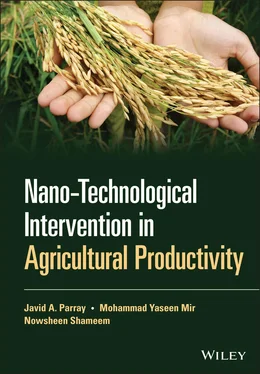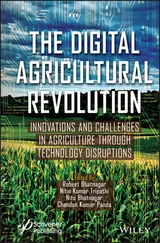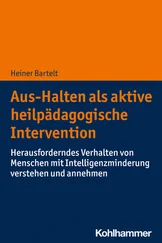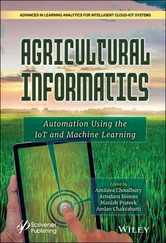2.1.5 Ecotoxicity of Oxide Nanoparticles
TiO 2, SiO 2, and ZnO nanoparticles have been examined in water suspensions of citrate containing low concentrations of PO 4in Gram‐positive and harmful bacteria such as B. subtilis and E. coli [44]. These effects are generally most susceptible to B. subtilis by operations produced from SiO 2to TiO 2to ZnO [6]. Magnetic nanoparticles are of great interest to researchers in many areas, including catalysis, bioengineering/biomedicine, and environmental science and technology [45]. Concerning material protection, it is essential to remember that ferrites are very suitable for biological purposes because of their low toxicity and strong magnetic characteristics [46]. In catalysis or water treatment, core/shaft metal nanoparticles or nanocomposites can be added [47]. For instance, in catalysis, nanocomposites can be quickly recovered and reused by a sequence of catalytic cycles because of the magnetic properties of NPs comprising platinum metals [40].
Zn and ZnO are phytotoxic to germination of seeds and root development following two hours in exposure to deionized water nanoparticle suspensions [48]. There were screening of five types of nanoparticles (corn and cucumber) and six plant species (radish, rape, and ryegrass). Approximately 50% inhibition of root growth was observed in nano‐Zn and nano‐ZnO at about 50 mg/l for radish and about 20 mg/l for rape and ryegrass. Reports indicate that pure alumina particles significantly reduce radical elongation in all plant species, potentially slowing plant growth. Alumina nanoparticles may be emitted into the atmosphere by exhaust systems and combined with other airborne materials. Alumina was also packed with phenanthrene, an essential element of polycyclic aromatic hydrocarbons in the atmosphere that can be absorbed into a particular substance in the air. They substantially reduced their phytotoxicity without having any harmful effects on the roots of plants [1].
2.2 Nanotechnology and Agriculture
There is great interest in nanotechnology's potential advantages in farming to improve agricultural production with little energy and expenditure inputs. The significant possible applications under nanoparticles in the farm sector were nanosensor systems, nanopesticides and nanofertilizers, and smart agrochemicals supply systems [49]. Besides, plant breeding and genetic engineering devices based on the nanotechniques [50] are also used. The development of nanotechnological approaches for farming, especially crop productivity and disease management, was encouraged [51]. Pesticide encapsulation of nanoparticles for continuous release, nanoparticles mediated by genetics for crop improvement, carbon nanoparticles supported by rain‐fed seed germination plants, nanofertilizers for improved crop nutrition and crop productivity, and nanopesticide management of plant diseases; De La Torre‐Roche et al. [52] indicates a decrease in the use of plant pesticides in combination with nanomaterials. This result demonstrates how these interactions benefit from reducing the residues of pesticides in plants and other parts.
In an age when increased supply for sustainability is bound to minimize the price and overuse of agricultural and natural resources, nanotechnology offers the possibility of precision cultivation [36]. However, considering the promising results achieved through the involvement in agriculture of advanced nanotechnologies, their importance to the market has not yet been reached [53]. Furthermore, fluctuating suspicions regarding the outcome, transport, bioavailability, and toxicity of NPs restrict the full acceptance and readiness of agricultural nanotechniques.
Consequently, nanotechnology provides a precise capacity to revitalize the agricultural industry. It is worth noting at the same time; nevertheless, that specific contribution to agriculture still is unclear and increasing. Therefore, a system‐level approach is essential to provide more precise information about the exposure of nanoparticles and their risk in agricultural systems. In the future, deciding factors are future guidance for improved forestry nanoparticle science, which will focus on optimizing the safe use of nanoparticles at an appropriate level of farming gain in modulating fate, actions, bioavailability, and toxicity.
2.3 Risk Assessment Factors and Modulation of Nanomaterials
The present situation shows the successful progress and renovating of the agricultural sector by the exciting science of nanotechnology applications. Such improvements are ultimately desperately needed to feed the rising global population, likely to reach nine billion by 2050. Because of the potential benefits of agricultural nanotech products soon, many countries worldwide are making a significant effort to assess the adequacy and feasibility of nanotechnology incorporation with cultivation. After nanoparticles are discharged into the atmosphere, they can interact with these parts of the agroecosystem [53]. Therefore, researchers aim to understand and track these essential interactions' essence to obtain realistic knowledge about the toxicity and potential impacts of released nanoparticles on the environment and agriculture. These investigations would also contribute mainly to determining the appropriate quantity of nanoparticles at all safe amounts tolerated.
Any changes in the plant–soil relationship, the main driver of agricultural production, influence the soil system's physicochemical properties. In particular, the soil is the primary sink of processed nanoparticles. Their next contact with various soil components may thus get an important effect on nanoparticles' fate, transportation, and behaviour. For instance, the significance of soil pH, organic matter material, and capacity to monitor their fate, toxicity, and bioavailability have been pointed out in few reports of most common, most studied, silver nanoparticles (AgNPs), with antimicrobial properties [54, 55] such as lesser soil pH, organic substance content, and the process of exchanging cation disrupt Ag to soil solubility. It leads to increased risk of AgNPs being mobile, toxic, or bioavailable. Instead, higher soil pH, organic matter content, and cation exchange capacity allow Ag to be soil sorbed, preventing AgNP mobility, bioavailability, and additional toxicity [55]. Wang et al. [56] have conducted a comparable toxicity study of ZnO‐NPs in soil and solution farming. The authors called for significantly decreasing the toxicity of ZnO‐NPs in the soil environment. It is mainly due to various soil properties that assess Zn's phytotoxicity of the soil systems, while toxicity is the dissolution of particles in solution cultures. Also, a 2000 mg/kg loamy sand concentration of pH 5.5 was reported not to show any phytotoxicity of ZnO‐NPs to Cucumis sativus [57, 58].
Besides, soil organic matter is seen as another significant factor affecting ZnO‐NP transportation behaviour, which eventually determines its toxicity. In reducing the toxicity of ZnO‐NPs in the direction of Zea mays , Zhao et al. [59] demonstrated the positive influence of alginate. Besides, ZnO‐NPs showed no reduction in plant biomass in the earth with alginate at 400–800 mg/kg while a substantial decrease was noted in biomass production without alginate.
The nanoparticles injected into the atmosphere gradually accrue into the soil, with soil types mainly influenced by their origin, transport, and behaviour [60]. Ge et al. [61] have observed, in a dose‐dependent way, the possible impact of TiO 2and ZnO‐NPs on the soil bacterial population. By DNA‐based fingerprinting study, reduced bacterial diversity has been reported, responding to these nanoparticles, decreasing Rhizobial, Bradyrhizobial, and Bradyrhizobiaceae taxa.
Читать дальше











![Chade-Meng Tan - Search Inside Yourself - Increase Productivity, Creativity and Happiness [ePub edition]](/books/703803/chade-thumb.webp)
